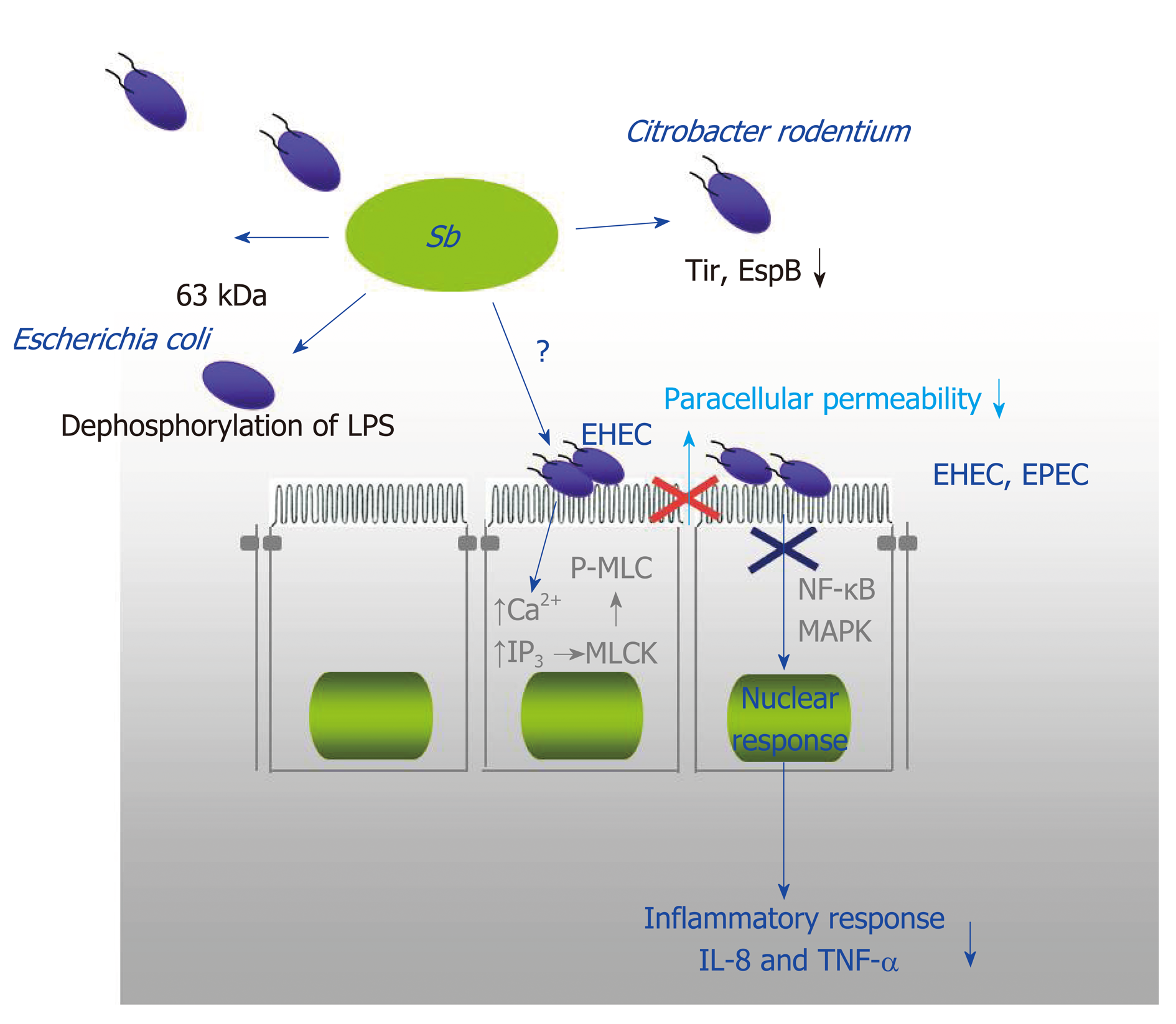Copyright
©The Author(s) 2019.
World J Gastroenterol. May 14, 2019; 25(18): 2188-2203
Published online May 14, 2019. doi: 10.3748/wjg.v25.i18.2188
Published online May 14, 2019. doi: 10.3748/wjg.v25.i18.2188
Figure 4 The protective mechanisms against enteropathogenic Escherichia coli (enteropathogenic coli, enterohaemorrhagic coli and Citrobacter rodentium).
They include an effect on the mucosa with Saccharomyces boulardii CNCM I-745 inhibiting the pathways involved in opening tight junctions (phosphorylation of myosin light chain kinase), inhibition of activation pathways of mitogen-activated protein kinases and NF-κB that are involved in the synthesis of Interleukin 8, and finally a direct effect of S. boulardii CNCM I-745 on bacteria (dephosphorylation of lipopolysaccharide of Escherichia coli and modification of the expression of pathogenicity factors of Citrobacter rodentium). EHEC: Enterohaemorrhagic coli; EPEC: Enteropathogenic coli; LPS: Lipopolysaccharide; MAPK: Mitogen-activated protein kinase; MLCK: Myosin light chain kinase; P-MLC: Phosphorylation of myosin light chain; IL-8: Interleukin 8; TNF-α: Tumor necrosis factor α Sb: Saccharomyces boulardii CNCM I-745.
- Citation: Czerucka D, Rampal P. Diversity of Saccharomyces boulardii CNCM I-745 mechanisms of action against intestinal infections. World J Gastroenterol 2019; 25(18): 2188-2203
- URL: https://www.wjgnet.com/1007-9327/full/v25/i18/2188.htm
- DOI: https://dx.doi.org/10.3748/wjg.v25.i18.2188









